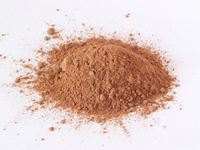
Photo from wikipedia
A near thermal two-step catalytic cycle for the selective release of hydrogen from formic acid by mononuclear cuprate anions was revealed using multistage mass spectrometry experiments, deuterium labelling and DFT… Click to show full abstract
A near thermal two-step catalytic cycle for the selective release of hydrogen from formic acid by mononuclear cuprate anions was revealed using multistage mass spectrometry experiments, deuterium labelling and DFT calculations. In gas-phase ion-molecule reactions, mononuclear copper hydride anions [(L)Cu(H)]- (where L = H-, O2CH-, BH4- and CN-) were found to react with formic acid (HCO2H) to yield [(L)Cu(O2CH)]- and H2. The copper formate anions [(L)Cu(O2CH)]- can decarboxylate via collision-induced dissociation (CID) to reform the copper hydride [(L)Cu(H)]-, thereby closing the two-step catalytic cycle. Analogous labelling experiments with d1-formic acid (DCO2H) reveal that the decarboxylation process also occurs spontaneously. A kinetic study was carried out to provide further insights into the species involved in this reaction. Energetics from density functional theory (DFT) calculations show that the key decarboxylation step can occur without CID, thus in support of experimental observations.
Journal Title: Dalton transactions
Year Published: 2023
Link to full text (if available)
Share on Social Media: Sign Up to like & get
recommendations!